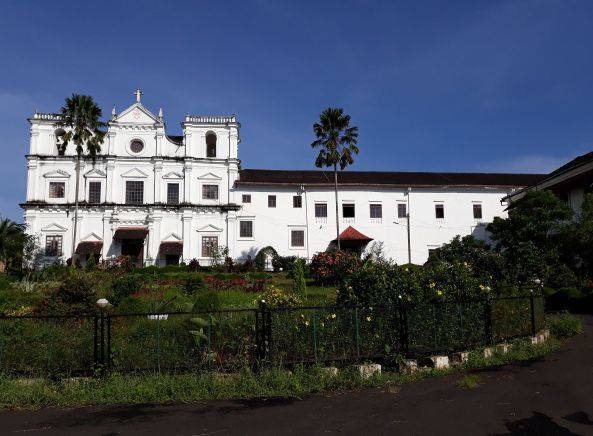Rachol is another village located in Salcete. Also known as Raitura, it is also where the famous Rachol Seminary is located. During the days of the Portuguese rule, Rachol also had a famous fort. Sadly, today all that remains of the fort is the old arched gateway and the moat that spanned the fort’s perimeter. Rachol is considered to be a very historical village in Goa and has a lot of heritage buildings. Ilha de Rachol is also a part of the village. The church in this village shares the same name as the one in neighboring Raia. While some articles mention that the Raia church is the oldest in Salcete, others say that the Our Lady of Snows church in Rachol is the oldest. Either way, both these churches date back to Portuguese rule and are of equal importance.
The historical and religious elements of Rachol
A lot of Goan villages and towns have a strong historical presence. Places like Panjim, Margão, Old Goa all have long histories due to the strong Portuguese influences in each of them. Goa itself has been a strategic stronghold throughout India’s history as well. So much so that forts were built all over the land by the Portuguese. Rachol village is one village that used to have a fort. It is also extremely well known for its church and seminary.

Image credit – TripAdvisor
The Rachol Fort
Located at the crest of a laterite hillock, surrounded by a moat, and built entirely out of laterite stone, the fort’s ruins lie approximately 7 km north-east of Margão. It was once upon a time, a Bahmani (Muslim) Sultanate stronghold under the command of Adil Shah, the Sultan of Bijapur. This fort has been of crucial strategic importance to the Hindus and Portuguese, besides the Muslims.
The Hindus from the kingdom of Vijayanagar, knowing how important it was, drove its Muslim inhabitants out. But the Muslims weren’t going to give up the fort without a fight. So the Vijayanagar kingdom ceded control to the Portuguese in exchange for military assistance in their efforts against the Muslims. It was only when the Portuguese took over, that the fort became a real powerhouse protected by more than a 100 guns. Eventually, it turned into a Christian stronghold as the Portuguese were Christians.
By the 18th century, the Portuguese had abandoned this fort. Years of neglect have long since taken their toll on the structure. Today, only an archway made of stone and a dry moat is left remaining from what was once a formidable structure and a big part of Goa’s history. This archway leads to the famous Rachol Seminary.
Capitão Diogo Rodrigues
One name stands out in regards to the Rachol fort. Capitão Diogo Rodrigues, one of the officers stationed there earned some notoriety for his ruthlessness. It is believed, he was allegedly responsible for the destruction of a number of temples in Salcete in the mid-16th century. His tombstone at the Rachol church is engraved with these words, ‘Here lies Diogo Rodrigues, “ O Capitão Desta Fortaleza”, captain of this fortress, who destroyed the pagodas of these territories. He died on the 21st of April of the year 1577’.
The very famous Rachol Seminary
The fort is not all that this village is famous for. It is also where one of the oldest seminaries in Asia is located. The Rachol Seminary, also known today as the Patriarchal Seminary of Rachol, Raiturchi Patriarkal Siminar in Konkani, and Seminário de Rachol in Portuguese, is the diocesan major seminary of the Roman Catholic Archdiocese of Goa and Daman.
The College and the Seminary
The foundation stone of the main quadrangular area was blessed and laid by Fr. Gaspar Soares on 1 November 1606.
The College was also shut down for a number of years in between its inception and today. It and the Seminary were also managed by different religious orders. The Oratorians first took over, then the Vincentians. Eventually, the College and control of all its priestly teachings were handed back to the Oratorians.
The fate of the Seminary
In 1835 all religious institutes were extinguished in Portugal and in all its possessions. So from that year, the Seminary was run by the diocesan clergy and came to be simply known as Seminário de Rachol. In 1886, the honorific title of Patriarch of the East Indies was bestowed on the Archbishop of Goa and Daman. Since then the seminary is known as the “Patriarchal Seminary of Rachol”. The seminary has renaissance paintings of Portuguese Goan high clergy and some royals.
Information credit
Wikipedia article on Rachol
ItsGoa/JUNE/KDGP


